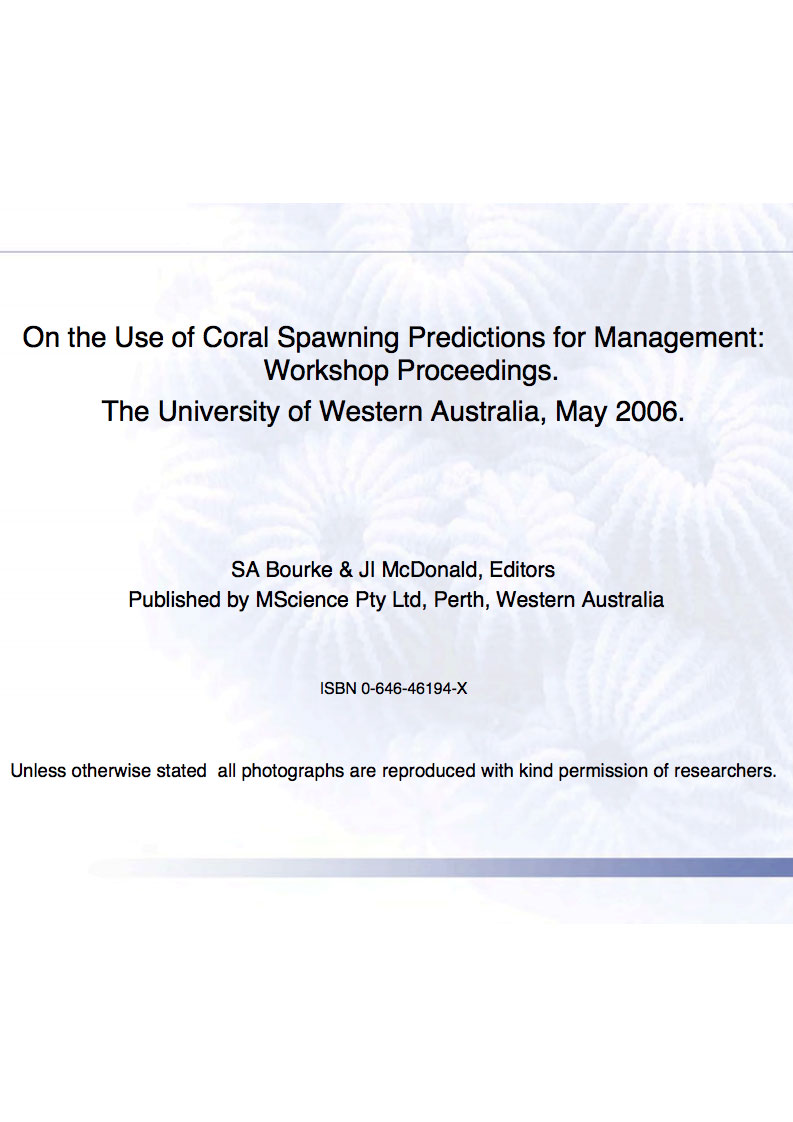On the Use of Coral Spawning Predictions for Management: Workshop Proceedings
The synchronous spawning of multiple species of hard corals over a few nights each year has been widely studied since the 1980s. In Western Australia, the peak spawning events are thought to occur in one or two months of late summer or early autumn. As the phenomenon becomes better studied in many parts of the world, the ‘big bang’ theory becomes more complex and may actually be a series of small explosions.
Regulators have sought to protect coral spawning events from potential adverse impacts caused by human disturbance to the marine environment, such as increased suspended sediments. Striking a balance between precautionary response and overcautious constraint has become more difficult as science describes greater complexity in the underlying reproductive biology.
On the 2nd May 2006, scientists, regulators and industry came together at the University of Western Australia in Perth to hear the results of recent research into the coral spawning phenomenon and its implications for environmental management. These proceedings provide the record of that workshop.
Publication available for download –
(requires Adobe Reader)
On the Use of Coral Spawning Predictions for Management: Workshop Proceedings.
The University of Western Australia, May 2006.
SA Bourke & JI McDonald, Editors
Published by MScience Pty Ltd, Perth, Western Australia


